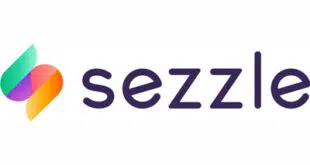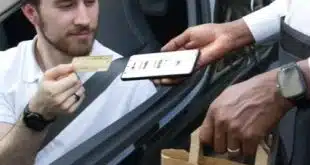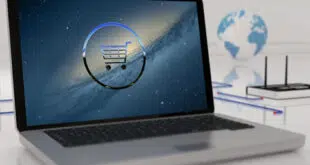With Apple Inc.’s Apple Pay mobile-payments platform launching Monday, many in the payments business are focused on the contactless technology’s potential to change in-store payments behavior. But Apple Pay works within apps, as well, opening up an even wider variety of markets for Apple, including sit-down restaurants.
Harbortouch, an Allentown, Pa.-based merchant processor, has launched a consumer app called Perkwave that works with Apple Pay to let users pay for meals while they’re still sitting at the table. The free app, available Monday on Apple’s App store, addresses a pressing problem that will only get worse when Europay-MasterCard-Visa (EMV) chip cards begin proliferating in the U.S. within the next couple of years, says Jared Isaacman, Harbortouch’s chief executive. “We said we’re going to try to solve a real problem, and that problem is pay-at-table,” Isaacman tells Digital Transactions News.
The company serves more than 10,000 small sit-down restaurants, which rely on it for point-of-sale equipment and transaction processing. But the Perkwave app represents the first time Harbortouch has introduced a consumer-facing product. With the first locations going live Monday with the launch of Apple Pay, Harbortouch is equipping the restaurants with table-top materials and window stickers to help promote Perkwave and Apple Pay to customers. Customer receipts also push the payment option.
Isaacman expects all of his sit-down restaurant clients to be live on Perkwave within seven to 10 days, but it’s the app’s potential to bring in new business that interests him the most. “We think we’re going to be gaining tens of thousands of restaurants with our pay-at-table solution,” he says.
A customer who has an Apple device that supports Apple Pay for in-app transactions can download and use Perkwave. When the meal’s over and the server brings the familiar black folio, the customer opens the app and scans a barcode appearing on the bill. Then he chooses the payment card he’s stored in Apple Pay, adds a tip, and receives an emailed receipt.
The method not only leverages Apple’s new payments platform, it also eliminates the need to bring special card-reading equipment to the table so the customer could wave or dip a chip card and leaves the payment process in the user’s control. “When the waiter shows up with a terminal and says it’s time to do EMV, it takes that [control] out of your hands,” Isaacman says. Also, he says, “culturally, we don’t like the idea of a waiter standing over our shoulder when we enter a tip.”
The potential for Apple Pay in-app payments in general is large, says George Peabody, a senior analyst at Glenbrook Partners, a Menlo Park, Calif.-based consultancy. That’s because, at the start, only about 220,000 in-store readers nationwide have the capability to perform the near-field communication links Apple Pay depends on.
“With Apple Pay, the in-app volume is going to be a very strong component” of overall volume, he says. “In-app is a pretty compelling experience and doesn’t require a hardware upgrade, except for the customer. Harbortouch is closing a loop [in restaurants].”
But it won’t be a slam dunk for Perkwave. Peabody cautions that restaurateurs themselves will have to promote the app heavily to customers. Also, the full features of the app—including the streamlined payment experience—are not available to Android and other non-Apple users, who constitute about 59% of all U.S. smart-phone users, according to researcher eMarketer.
“Pay-at-table will live with Apple for some time,” Isaacman says. He says Android users can take advantage of the app’s rewards features but won’t be able to use Apple Pay to settle their bill. “That’s not nearly so compelling,” he says.
Indeed, Isaacman credits Apple with making his pay-at-table solution possible in the first place. “All credit goes to Apple Pay,” he says. “We don’t have to do much for the consumer. Apple does that. What’s going to make the consumer take his phone out and pay, that’s the power of Apple.”





